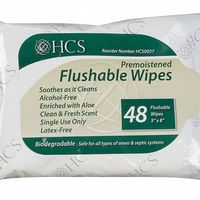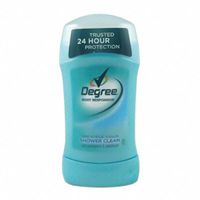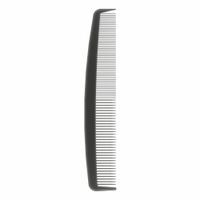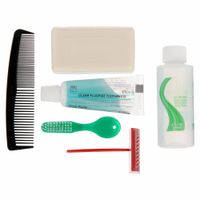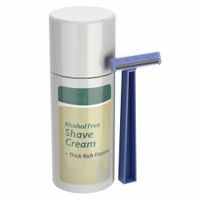Call +(254) 703 030 000 / 751 483 999 / 721 704 777
- Home
- Cleaning And Janitorial
- Hand Personal Care
- Facial Body Hair Care
.....Read More
Frequently Asked Questions
What are the best facial products for healthy skin?
The best facial products for healthy skin typically include a combination of cleansers, moisturizers, serums, and sunscreens, tailored to your specific skin type and concerns.
1. **Cleanser**: A gentle, sulfate-free cleanser is essential for removing dirt, oil, and makeup without stripping the skin. Look for ingredients like glycerin or ceramides for hydration.
2. **Moisturizer**: Choose a moisturizer that suits your skin type. For dry skin, opt for products with hyaluronic acid or shea butter. For oily skin, lightweight, non-comedogenic moisturizers with ingredients like niacinamide are ideal.
3. **Serum**: Serums are concentrated treatments that target specific concerns. Vitamin C serums are excellent for brightening and protecting against environmental damage. Retinol serums can help with anti-aging and acne, while hyaluronic acid serums provide deep hydration.
4. **Sunscreen**: Daily use of a broad-spectrum SPF 30 or higher is crucial to protect against UV damage. Mineral sunscreens with zinc oxide or titanium dioxide are often recommended for sensitive skin.
5. **Exfoliant**: Regular exfoliation helps remove dead skin cells and promote cell turnover. Chemical exfoliants like AHAs (glycolic acid) or BHAs (salicylic acid) are effective and less abrasive than physical scrubs.
6. **Toner**: A hydrating toner can help balance the skin's pH and prepare it for subsequent products. Look for alcohol-free formulas with soothing ingredients like rose water or chamomile.
7. **Face Oil**: For added nourishment, especially in dry climates, face oils with ingredients like jojoba or argan oil can lock in moisture and provide a healthy glow.
8. **Eye Cream**: Target specific concerns like puffiness or dark circles with eye creams containing caffeine or peptides.
Always patch-test new products and consult with a dermatologist to tailor a routine to your skin's needs.
How often should I use shampoo and conditioner?
The frequency of using shampoo and conditioner depends on several factors, including hair type, scalp condition, lifestyle, and personal preference.
For oily hair, shampooing every day or every other day can help control excess oil and maintain a fresh appearance. Use a lightweight conditioner to avoid weighing down the hair.
For normal hair, washing 2-3 times a week is generally sufficient. This helps maintain natural oils while keeping the hair clean. A regular conditioner can be used each time you shampoo to keep the hair hydrated and manageable.
For dry or curly hair, shampooing once a week or even less frequently is often recommended. This helps preserve natural oils that keep the hair moisturized. A deep conditioner or leave-in conditioner can be beneficial to maintain moisture and reduce frizz.
For color-treated or chemically processed hair, using a sulfate-free shampoo 2-3 times a week can help preserve color and prevent damage. A color-safe conditioner should be used to maintain vibrancy and health.
For those with a sensitive scalp or dandruff, using a medicated shampoo as directed by a dermatologist is important. Frequency may vary based on the product and individual needs.
Lifestyle factors, such as exercise or exposure to pollution, may require more frequent washing. However, over-washing can strip the hair of natural oils, leading to dryness and damage.
Ultimately, it's important to listen to your hair and scalp's needs and adjust your routine accordingly. Experimenting with different products and frequencies can help you find the best balance for your hair type and lifestyle.
What is the difference between deodorant and antiperspirant?
Deodorant and antiperspirant serve different purposes in personal hygiene, though both are used to manage body odor.
Deodorant primarily targets odor. It contains antimicrobial agents that reduce bacteria on the skin, which are responsible for the smell when they break down sweat. Deodorants often include fragrances to mask any remaining odor, providing a fresh scent. They do not prevent sweating but focus on neutralizing the odor associated with it.
Antiperspirant, on the other hand, is designed to reduce sweating itself. It contains aluminum-based compounds that temporarily block sweat glands, reducing the amount of sweat that reaches the skin's surface. By minimizing moisture, antiperspirants also help in reducing the environment where odor-causing bacteria thrive. Some antiperspirants also include deodorizing agents to combat any residual odor.
In terms of application, both products are available in various forms such as sprays, sticks, gels, and creams. However, antiperspirants are often recommended for use at night, allowing the active ingredients to effectively block sweat glands while the body is at rest.
Regulatory distinctions also exist. In many countries, antiperspirants are considered over-the-counter drugs because they affect a bodily function (sweating), while deodorants are classified as cosmetics.
In summary, the key difference lies in their function: deodorants control odor without affecting sweat production, while antiperspirants reduce sweat to prevent odor. Users may choose based on personal preference, skin sensitivity, and the level of sweat control needed.
How do body and baby wipes work without soap?
Body and baby wipes work without soap by utilizing a combination of gentle cleansing agents, moisturizers, and other ingredients that effectively clean the skin. These wipes are typically made from non-woven fabric, which is soft and absorbent, allowing them to pick up dirt, oils, and other impurities from the skin's surface.
The cleansing agents in wipes are usually mild surfactants. Surfactants are compounds that lower the surface tension between two substances, such as a liquid and a solid. In wipes, they help to loosen and lift dirt and oils from the skin, making it easier to wipe them away. These surfactants are carefully chosen to be gentle enough for sensitive skin, especially in baby wipes, where harsh chemicals could cause irritation.
In addition to surfactants, wipes often contain moisturizing ingredients like glycerin, aloe vera, or chamomile extract. These ingredients help to hydrate and soothe the skin, preventing dryness and irritation that can occur with frequent wiping. Some wipes also include preservatives to ensure the product remains free from bacteria and mold during storage and use.
The absence of soap in wipes is beneficial for maintaining the skin's natural pH balance. Soap can be alkaline, which may disrupt the skin's slightly acidic pH, leading to dryness or irritation. Wipes are formulated to be pH-balanced, making them suitable for regular use without compromising skin health.
Overall, body and baby wipes provide a convenient and effective way to clean the skin without the need for rinsing, making them ideal for on-the-go use or situations where water is not readily available.
What are the benefits of using a hair brush or comb?
Using a hair brush or comb offers several benefits for hair health and appearance. Firstly, it helps in detangling hair, reducing the risk of breakage and split ends. Regular brushing or combing distributes natural oils from the scalp throughout the hair, providing natural conditioning and adding shine. This process also stimulates the scalp, promoting blood circulation, which can encourage hair growth and improve scalp health.
Brushing or combing can help remove dirt, debris, and dead skin cells from the scalp, contributing to a cleaner and healthier scalp environment. It can also help in reducing dandruff by evenly distributing scalp oils and removing flakes. For those with curly or textured hair, using a wide-tooth comb can help maintain curl patterns and prevent frizz.
Additionally, using the right type of brush or comb can help style hair, adding volume or smoothing it out as desired. It can also help in evenly distributing styling products, ensuring better results. For individuals with long hair, regular brushing can prevent tangles and knots, making hair more manageable.
Overall, incorporating a hair brush or comb into a daily hair care routine can enhance hair's appearance, health, and manageability, while also providing a moment of self-care and relaxation.
How can I prevent razor burn when shaving?
To prevent razor burn when shaving, start by preparing your skin and hair. Take a warm shower or apply a warm, damp towel to your face to soften the hair and open the pores. Use a high-quality shaving cream or gel to provide a protective barrier and reduce friction. Opt for a sharp, clean razor to ensure a smooth shave; dull blades can cause irritation and tug at the hair.
Shave in the direction of hair growth to minimize irritation and avoid going over the same area multiple times. Use short, light strokes and rinse the blade frequently to remove hair and cream buildup. If you have sensitive skin, consider using a single or double-blade razor instead of multi-blade options, which can be more aggressive.
After shaving, rinse your skin with cool water to close the pores and pat it dry with a clean towel. Apply a soothing, alcohol-free aftershave or moisturizer to hydrate the skin and reduce inflammation. Look for products containing aloe vera, witch hazel, or chamomile, which have calming properties.
Maintain a regular exfoliation routine to remove dead skin cells and prevent ingrown hairs, which can contribute to razor burn. Use a gentle scrub or exfoliating brush a few times a week, but avoid doing so immediately before or after shaving to prevent additional irritation.
Finally, ensure your razor is stored in a dry place to prevent bacteria buildup and replace the blades regularly to maintain their effectiveness. By following these steps, you can significantly reduce the risk of razor burn and achieve a smoother, more comfortable shave.
What should be included in a personal care kit?
A personal care kit should include essential items that cater to hygiene, grooming, and basic health needs. Here’s a comprehensive list:
1. **Hygiene Products**:
- Toothbrush and toothpaste for oral care.
- Floss and mouthwash for complete dental hygiene.
- Soap or body wash for cleansing.
- Shampoo and conditioner for hair care.
- Deodorant or antiperspirant to manage body odor.
- Hand sanitizer for on-the-go cleanliness.
- Wet wipes for quick clean-ups.
2. **Grooming Tools**:
- Comb or brush for hair maintenance.
- Nail clippers and a nail file for nail care.
- Tweezers for grooming eyebrows or removing splinters.
- Razor and shaving cream for shaving needs.
3. **Skincare Essentials**:
- Moisturizer to keep skin hydrated.
- Sunscreen to protect against UV rays.
- Lip balm to prevent chapped lips.
4. **Health and First Aid**:
- Band-aids and antiseptic wipes for minor cuts.
- Pain relievers like ibuprofen or acetaminophen.
- Any personal medications with instructions.
5. **Miscellaneous**:
- Cotton swabs for cleaning ears or applying products.
- Tissues for personal use.
- A small mirror for grooming checks.
6. **Travel-Friendly Items** (if applicable):
- Travel-sized containers to comply with travel regulations.
- A compact, durable bag to organize and carry items.
This kit should be tailored to individual needs, considering personal preferences, skin type, and any specific health requirements. Regularly check and replenish items to ensure the kit remains effective and up-to-date.
